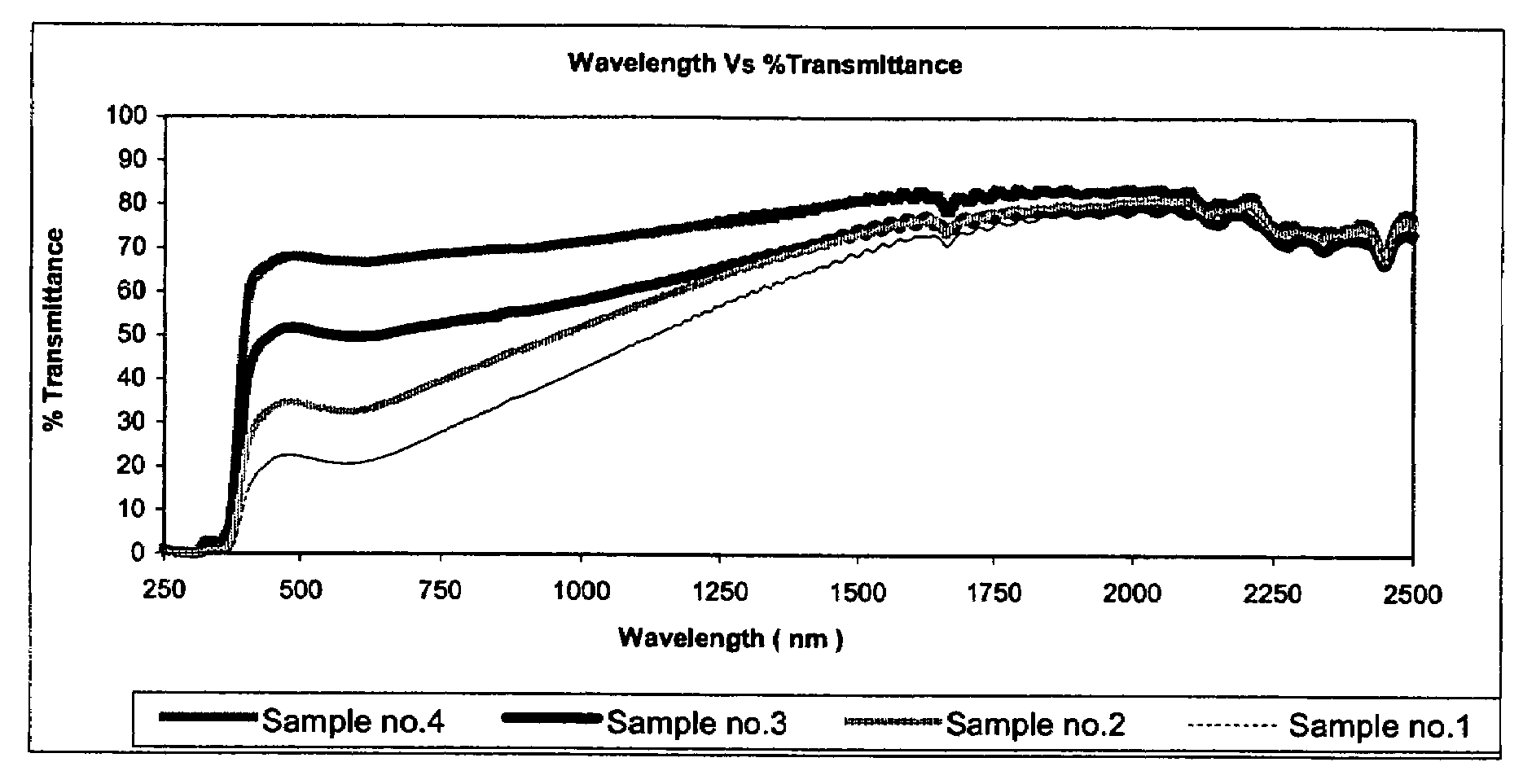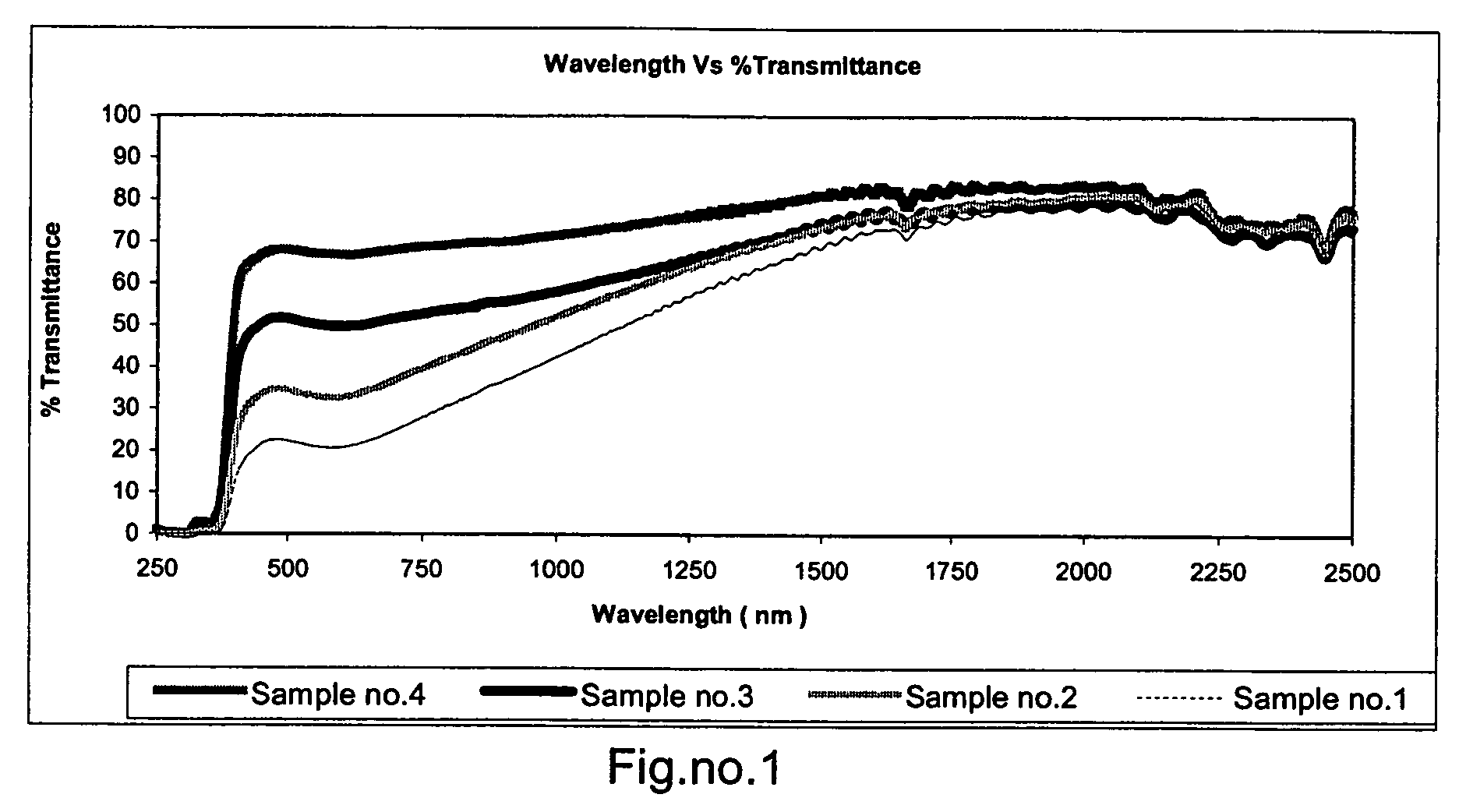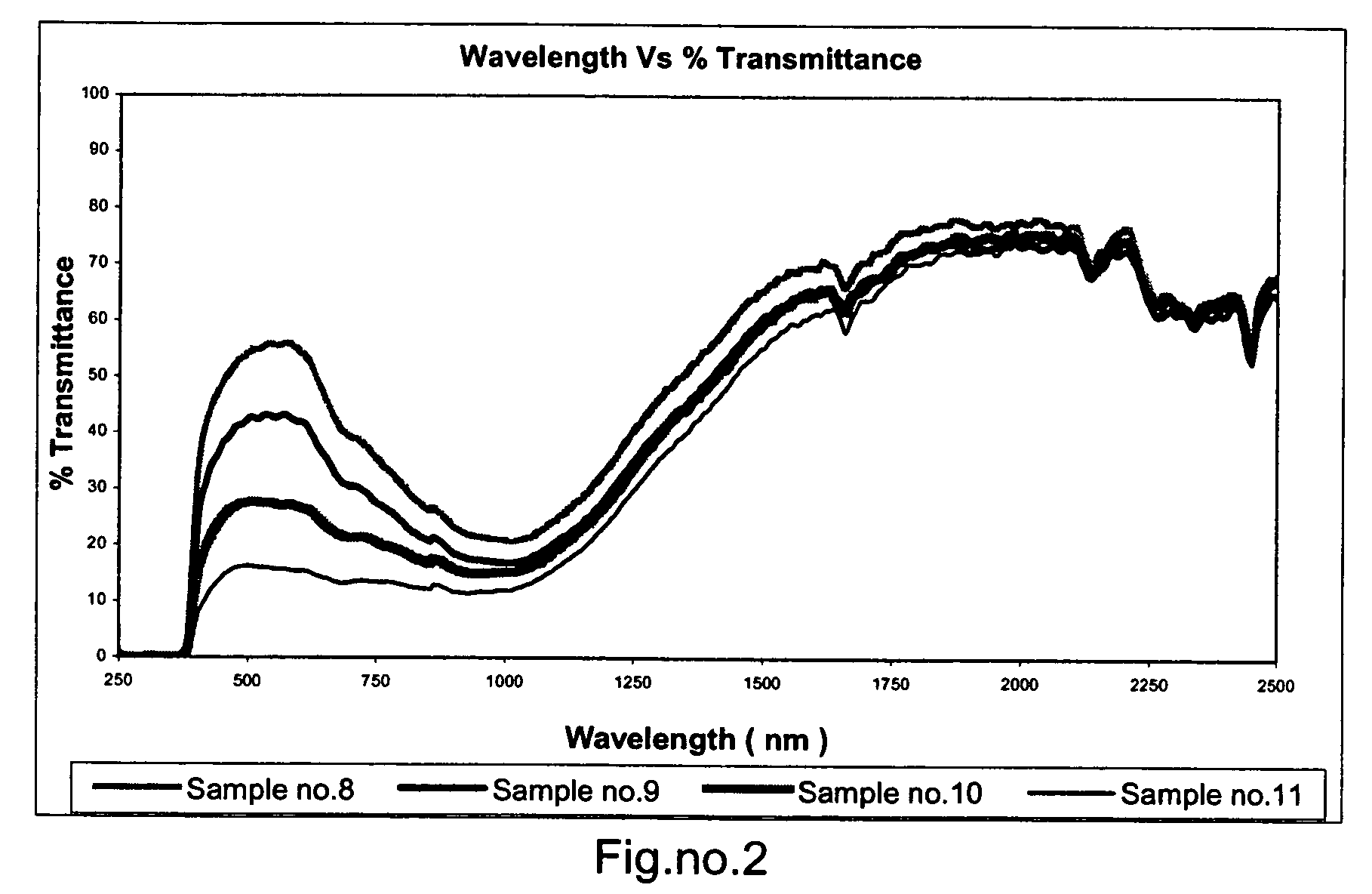Solar energy shielding window film laminates
a polyester film, solar energy technology, applied in the direction of greenhouse cultivation, synthetic resin layered products, electromagnetic radiation sensing, etc., can solve the problems of film fading, film has severe performance drawbacks, progressive fading and transmittance loss
- Summary
- Abstract
- Description
- Claims
- Application Information
AI Technical Summary
Benefits of technology
Problems solved by technology
Method used
Image
Examples
example no.1
[0057]Preparation of laminate with mixed metal oxides as solar-energy-screen particles in the laminating adhesive layer.
[0058]Dispersion of mixed metal oxides as solar-energy-screen particles under trade name WRF-20S hereafter referred to as “B” was mixed with laminating adhesive under tradename Adcote™ and co-reactant under tradename 9H1H (96.2: 3.8% proportion) hereafter referred to as “A” followed by stirring in agitator for 30 minutes, further diluted using toluene as solvent to achieve good optical properties.
[0059]Laminating adhesive along with above solar energy shielding nanoparticles were applied on one surface of non UV stabilized PET film by conventional gravure roll coating technique followed by drying at 110° C., to achieve dry weight of 2.5 to 4.5 g / m2, followed by lamination with 23μ clear UV stabilized film. This coated film was referred to as film “X”. Solar energy shielding nano composites were well protected in between two layers of polyester film against attack o...
example no 2
[0066]Preparation of laminate with mixed metal oxides as solar-energy-screen particles in the laminating adhesive layer; the base film used was metallized.
[0067]In this example, the optically clear UV stabilized film in example 1 was replaced by 23μ pre-metallized films having visible light transmission 50, 35 and 20% as the base film and the laminate was prepared as in Example 1. The pressure sensitive adhesive was applied on an opposite side surface of the metallized film while preparing the laminate. The optical properties of the samples 5-7 given in Table no.3 indicate that the samples containing the mixed metal oxides as solar-energy-screen particles in the adhesive layer reduce the interior visible light reflectivity as compared to the corresponding control samples without the mixed metal oxides.
TABLE NO. 3% VisibleRatio% VisibleReflectance% Solar% Solar% SolarSr NoA:BTransmittanceInteriorExteriorAbsorptionReflectionTransmittanceSample 5*1:0.135381319471934Control sample1:0552...
example no.3
[0069]Preparation of laminate with mixed metal oxides in combination with LaB6 as solar-energy-screen particles in the laminating adhesive layer; the base film used was clear UV stabilized.
[0070]The laminates were prepared as in Example 1 wherein LaB6 was incorporated in the adhesive layer with the mixed metal oxides. The optical properties are given in Table 4. When compared to Table 1, addition of LaB6 reduced the total solar energy transmission but enhanced the total solar energy rejection. The optical spectra indicate that addition of LaB6 increases the absorption in the near IR region.
TABLE NO. 4Ratio% Visual% Solar% Solar% SolarSr. NoA:B:CtransmittanceTransmittanceReflectanceAbsorptionTSER*Sample 81:0.135:0.9554175243Sample 91:0.27:0.9423376049Sample 101:0.55:0.9272666854Sample 111:0.80:0.9161967558TSER*—Total Solar Energy Rejection
PUM
| Property | Measurement | Unit |
|---|---|---|
| light transmittance | aaaaa | aaaaa |
| thermal shrinkage | aaaaa | aaaaa |
| thickness | aaaaa | aaaaa |
Abstract
Description
Claims
Application Information
 Login to View More
Login to View More - R&D
- Intellectual Property
- Life Sciences
- Materials
- Tech Scout
- Unparalleled Data Quality
- Higher Quality Content
- 60% Fewer Hallucinations
Browse by: Latest US Patents, China's latest patents, Technical Efficacy Thesaurus, Application Domain, Technology Topic, Popular Technical Reports.
© 2025 PatSnap. All rights reserved.Legal|Privacy policy|Modern Slavery Act Transparency Statement|Sitemap|About US| Contact US: help@patsnap.com



